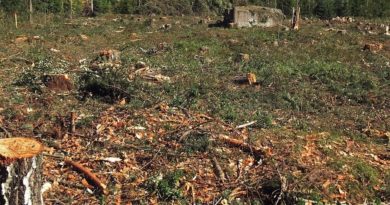Why Aren’t We Talking Enough About Butterflies In India?
It’s time we talk about the ‘other’ winged beauties around us—the beautiful (and boldly named) butterflies and moths
Let’s talk about the other winged beauty, that is, the butterfly. I wonder why we don’t talk more often about these ambassadors of a healthy environment. A puzzler! Butterflies thrive in a healthy environment (we don’t see much in our smog covered cities, now do we?) so their presence or the lack of it is the best indicator possible. Like birds and the bees, butterflies are great pollinators, though not as effective as the former two. Some are flamboyant with their appearance and some blend way too effectively, take for instance the oak leaf butterflies. Whatever it may be, at the end of the day butterflies are some of the things that one’s childhood is made of. Those fluttering beauties, displaying beautiful colours and patterns, a perfect happy scene anyday. But did you also know that butterflies do not only feed on sweet nectar, but also on mud, bird droppings, sweat and urine of animals? And speaking of mud, on my last visit to Kanha National Park in Madhya Pradesh, I came across some butterflies on the ground. Curious, I asked my guide what it was and was told that the butterflies were feeding on the decaying mahua flowers. Later after further research I came to know about mud puddling, a behaviour where butterflies gather around mud or wet decomposing organic matter from where they extract minerals and pass them on to females later during mating. For healthier eggs. Really.
I approach butterflies with a lot of reservations mainly because of the fact that they were once upon a time a caterpillar. Never a pleasant subject for someone who has a mind-numbing fear of caterpillar, these crawlies become something that only describes beauty. If you spot a butterfly fluttering from one leaf to another, it is just tasting the surface for a perfect place to lay eggs. Yes, butterflies taste with their legs. Once laid, the lifecycle of a butterfly begins—egg, larva (caterpillar!), pupa and adult. The lifecycle of a butterfly is a perfect metamorphosis; what you see as a larva gets dissolved completely during the pupa stage and out comes the beautiful wings and away they fly.

In The Book of Indian Butterflies by Issac Kehimkar, published by Bombay Natural History Society, the Butterfly Man of India has talked about more than a thousand species and subspecies of butterflies found in India and the neighbouring countries, with a detailed account of where to find these winged beauties. Turns out, India is a butterfly paradise and on top of that, the northeast India is a butterfly hotspot. In the northeast alone there are 900 recorded species of butterflies out of 1300 species in India. Now where in the northeast, you may ask. Assam, Meghalaya, Nagaland, Mizoram, Arunachal Pradesh and Sikkim are best places to see these beauties but northeast do come with its own set of hurdles. In this case, the dense vegetation. Setting out on a mission to chase butterflies also implies coming face to face (read legs) with leeches and many pesky insects that are, by all means, bloodthirsty. Not that it has deterred butterfly enthusiasts, these hurdles, once past, will give you an experience with wildlife you won’t easily forget. On my visit to Khonoma, Nagaland, earlier last year, I encountered some butterflies mud-puddling and I remember wondering what’s on that patch of earth that’s attracting these beauties. It could have been an animal’s urine for all I know!

Since this is about where to go butterfly-spotting in India, here are some places you should definitely visit: Pakke Tiger Reserve, Namdapha National Park and Nameri National Park in Arunachal Pradesh. More than 236 species have been recorded from Pakke Tiger Reserve. Another prominent name in the northeast when it comes to butterfly is Garo Hills of Meghalaya. The lush forest of Garo Hills are a safe haven for these butterflies and moths. Take for example the pretty in blue, the silver royal ancema blanka. The locals here know the importance and conservation of these butterflies and here it’s a collective effort. Butterfly & Moth Community-Based Ecotourism Centre in Karawani is a good place to start with if you are keen on butterfly spotting and experiencing the unmatched beauty of the forest that makes up Garo Hills. More than 360 species of butterflies and moths have been recorded from this region. Look out for the pretty Koh-i-noor when exploring Garo Hills. Gibbon Sanctuary and Nameri National Park in Assam are some of the best regions for butterflies in the state; Buxa Tiger Reserve in West Bengal; Mahim Nature Park and Sanjay Gandhi National Park in Mumbai, Belvai in Karnataka (foothills of Western Ghats); Kalakkad Mundanthurai Tiger Reserve in Tamil Nadu and; the very popular Valley of Flowers in Uttarakahnd, are just some of the names that should come to mind when butterfly is mentioned.

India as a whole is a great hotspot for butterflies; it goes without saying that the aforementioned list is not the final list for butterfly spotting, but only a small introduction to the nature’s treasure-house of butterflies and moths. From forest to fields to high mountains, they are there if you have the will to go chase them. Spotting the elusive Apollo in the high altitude of the Himalaya should give you enough thrill to last a long time. Last but not the least, Chizami village in Phek district, Nagaland, is a breath of fresh air in the butterfly community. From Chizami village, 212 species of butterflies were recorded as per a joint study and research by Tshetsholo Naro and Sanjay Sondhi (Founder Trustee Titli Trust), notable lepidopterists of India.

I came across something very interesting while doing my research for this article. “What’s in a name?…” the famous quote by William Shakespeare came to me in a new light. I couldn’t help but notice that naming of some of the species of butterfly and moth was more than ambitious. Take for instance the Restricted Demon (from Chizami), Common Crow, Common Tiger, Psyche, Common Peacock, Spotted Demon, Apollo…these are just some of the names out of many that are not only misleading but are also tad too ambitious. But also true is the fact that the fun behind learning these names and then exploring places to see them in person, that’s something only butterflies can give you.
Story and Images Source : outlookindia.com




